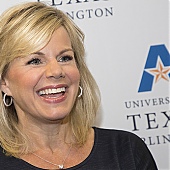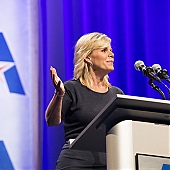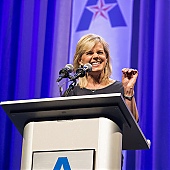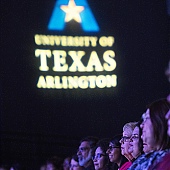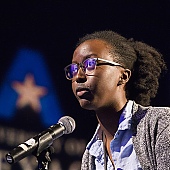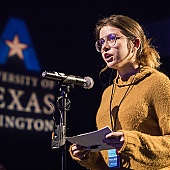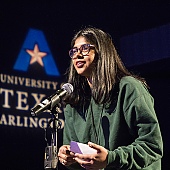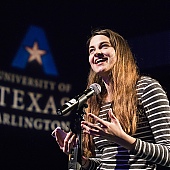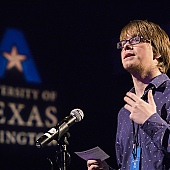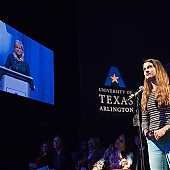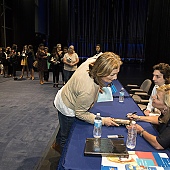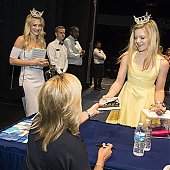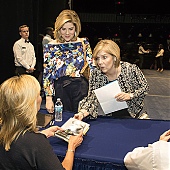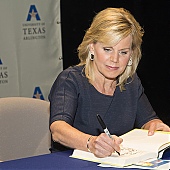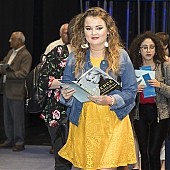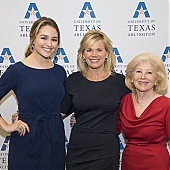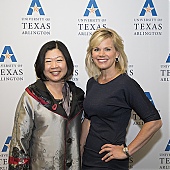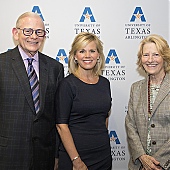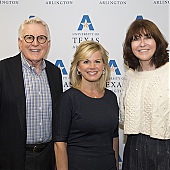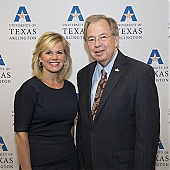As UT Arlington’s vice president for research and federal relations, Dr. Ron Elsenbaumer oversees the University’s burgeoning research enterprise.
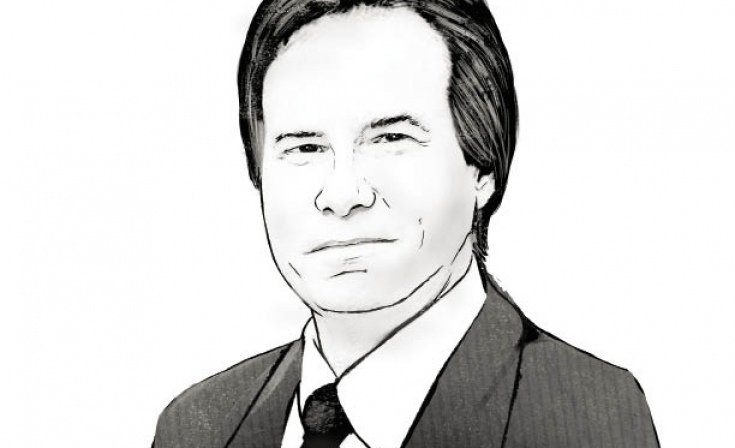
Why Innovation Matters
Message from the Vice President for Research
· Summer 2011 · Comment ·
One of the biggest understatements in scientific history appeared in a 1953 paper by James Watson and Francis Crick. In presenting their research on the DNA double helix, they wrote, “This structure has novel features which are of considerable biological interest.”
Their “considerable” finding was actually an incredible revelation that led to a better understanding of how organisms pass on their genes and of genome sequencing, as well as other scientific milestones. More than half a century later, discoveries are still emerging from this seminal biological breakthrough.
Such innovation improves our quality of life and fuels economic development, and we need more of it. As marketplaces for ideas, universities provide fertile ground for the creative process that produces new knowledge. The polio vaccine, rocket fuel, MRI technology, seat belts, and numerous other world-changing inventions stemmed from university research.
At UT Arlington, we relish our role as a beacon of innovation. We promote academic freedom and foster an environment that rewards curiosity and challenges conventional thought. We understand that the next major discoveries will come only when people are encouraged to dream big and think differently.
Remember The Six Million Dollar Man TV show where a crippled test pilot is rebuilt with bionic limbs and implants? It’s not far from reality today. A team of UT Arlington bioengineering researchers is developing technology that will enable soldiers who’ve lost arms or legs to feel and control their prosthetic limbs as if they’re real.
Another University breakthrough could revolutionize the medical diagnostics field. The technology will allow you to walk into a doctor’s office and, with a simple finger prick, get a reading in 10 minutes on what ails you or what might soon ail you. Optical sensors will accurately monitor biochemical reactions in real time with no need for chemical tags.
The company developing this process, Resonant Sensors Inc., receives assistance from the Center for Innovation, a partnership between UT Arlington and the Arlington Chamber of Commerce that furthers technology-led economic development. The center moves ideas from concept to market across an eight-state region.
Founded using intellectual property licensed through UT Arlington, Resonant Sensors is a classic example of the innovation process. Researchers use fundamental knowledge to develop applied technology that leads to products for the marketplace. UT Arlington provides all the tools for scholars to complete this cycle of vertical integration.
Each year we average 65–70 invention disclosures (the first step in protecting an invention with a patent). We typically file 20 patents a year and receive about eight. Once a patent is issued, the technology can be licensed for commercialization. We recently announced a licensing agreement with a Fort Worth company for a portable converter that turns natural gas into jet fuel and diesel. Several other agreements are in the works.
As we progress through the cycle of how to creatively use fundamental knowledge, we also must focus on teaching and training the next generation of thinkers and innovators. If we teach only from a textbook, the book will never change. What we teach must evolve as we create, and we must keep feeding the cycle of knowledge to produce a better-educated society.
Several decades ago, the Dick Tracy comic strip introduced a two-way wrist radio that Tracy and other police officers wore like a watch. This make-believe communications device became a widely recognized icon and is often considered a precursor to today’s smartphones. For this invention to morph from fantasy to reality, somebody had to make the technology small, lightweight, and power efficient. Somebody had to think creatively and without limits.
It’s that type of thinking that will lead to the next generation of inventions, to life-changing technologies that seem like science fiction today. We’re learning more and more about nerve and tissue regeneration and can now regrow tissue in a dish and implant it in the body. Why not regrow a heart, a lung, or an eye? It’s possible, but it takes dedication, creativity, discovery, and learning—all tied together.
At UT Arlington, we believe it’s our obligation to create new knowledge through research and shape minds to develop tomorrow’s innovations. We do it to change lives, enhance lives, and save lives now and for generations to come.
